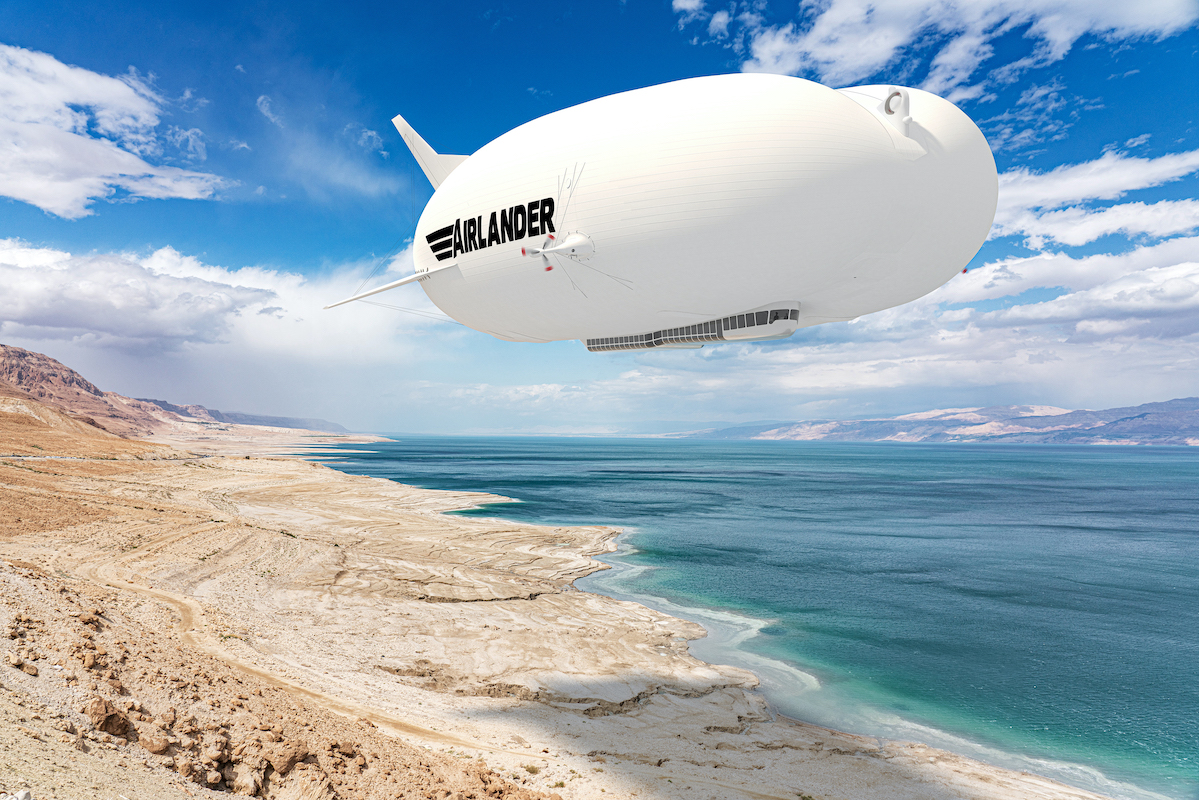This website uses cookies so that we can provide you with the best user experience possible. Cookie information is stored in your browser and performs functions such as recognising you when you return to our website and helping our team to understand which sections of the website you find most interesting and useful.
The sky’s the limit: are airships the future of luxury travel?
By Gabriel Power | 14 May 2022 | Travel
As Cookson Adventures sits on the cusp of reintroducing these iconic giants as a means of high-class air travel, we ask founder Henry Cookson about his plans for the new HAV Airlander 10 – and find out how it could help revolutionise the future of flight
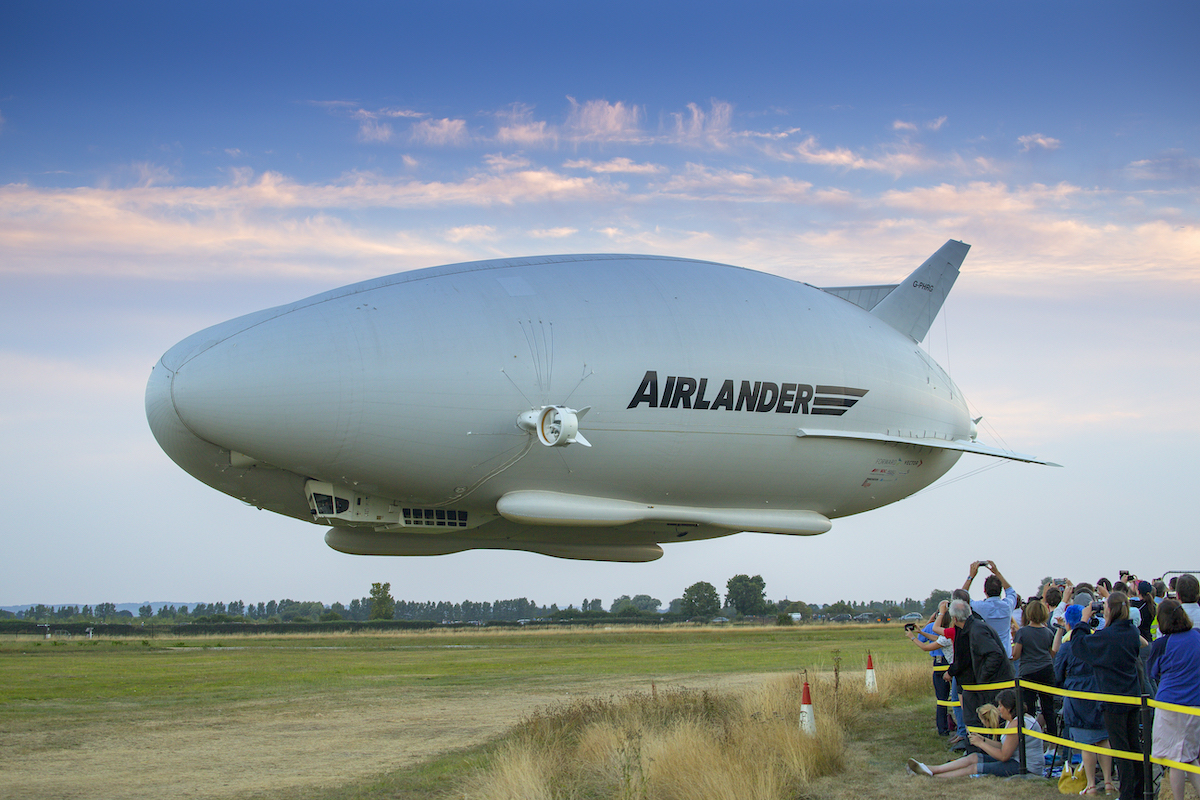
It’s not 1968 anymore. The Jet Age, while not technically over, no longer ignites our collective imagination in the manner it once did; we have entered an age in which jet travel has become mundane, owing to the industry’s ubiquity and penchant for frugality. While technology used in the cockpit has reached dizzying heights of sophistication in recent decades, that same timeline has seen lay-flyers treated to barely more than minor superficial improvements to aircraft and rather unromantic – though still vitally important – curtailments to their environmental impact.
And so, peering into the future of aviation, and a reality no longer beholden to the grip of budget airlines, we dare to dream big. But while many of us are likely beguiled by the allure of extremes – increasingly eye-watering top speeds, impossibly rapid acceleration and ultra-aerodynamic fuselages – Hybrid Air Vehicles (HAV) and Cookson Adventures have flipped the script entirely with a project so audacious that it will undoubtedly alter the course of luxury travel.
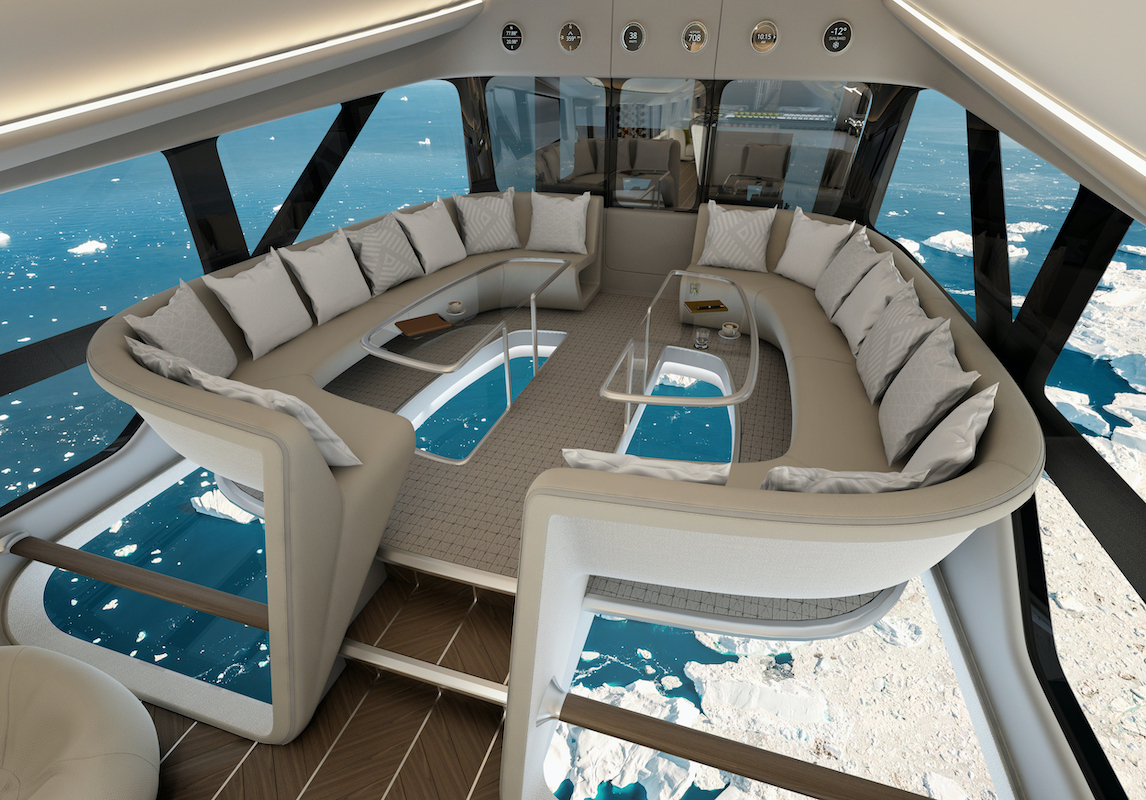
First launched in 2012 for non-commercial purposes, HAV’s Airlander 10 is an environmentally friendly evocation of the age of the Zeppelin; a gargantuan, 300ft-long helium airship with a support network of engines, propellers and small auxiliary wings, still capable of reaching speeds of 92mph and remaining airborne for five days straight. But, after a fruitless stint with the US Army that ended in 2013, this dazzlingly retro-futuristic design was left in a state of limbo until it was repurchased by HAV and converted into a commercial aircraft – and luxury travel expert Henry Cookson spotted the opportunity of a lifetime.
Cookson, a former polar explorer, is the founder of London-based luxury travel agency Cookson Adventures, which recently announced a collaboration with HAV that will see the Airlander 10 reborn as a luxury passenger craft, with the agency branding it an “explorer yacht of the skies”. But how does Cookson intend to use the airship, and how will it shape the future of commercial aviation? We sit down with Henry to get the bird’s eye view of this bold new adventure.
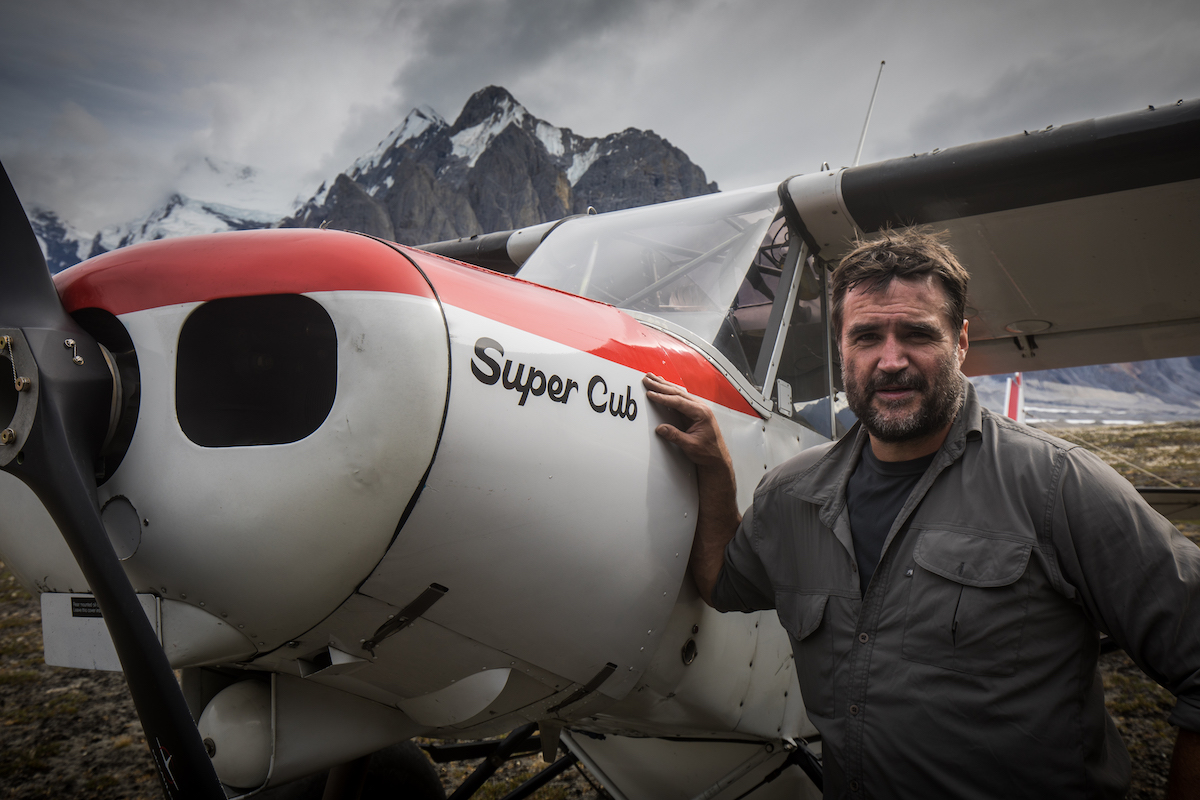
Henry, how did you become interested in the Airlander 10 project?
At Cookson Adventures, we’re always looking to push the boundaries on what’s possible in luxury private travel. From the start of this project, the incredible potential of this revolutionary new travel experience was clear for us to see. Airlander’s cutting-edge green technology aligns perfectly with our continued commitment to promote sustainable travel. We came onboard early as a partner to help contribute our expertise to its development.
What new opportunities does this open up for travellers?
These hybrid aircrafts have the potential to transform the way we travel in the future. The opportunities Airlander 10 will give us to showcase our creativity in designing new luxury experiences is endless. Airlander’s ability to cruise and land anywhere – be it an urban runway, desert or icecap – will give guests the freedom to explore remote locations without a set agenda, and allow them to be immersed into both familiar and unfamiliar destinations in a manner never seen before. The journey will be an experience in itself, which guests will be able to enjoy in supreme comfort. The slow pace of travel, the low cruising altitude and large panoramic windows will afford incredible views over landscapes that just can’t be appreciated from a traditional fixed wing aircraft or helicopter
What is the significance – and practical applications – of the airship-like design?
Airlander 10 is a flexible and efficient platform that can be configured to allow for a broad range of applications, which are not just tourism focused. For example, Airlander’s cabin can be configured to provide seating for up to 100 passengers, offering a low emissions air mobility option. Airlander will more efficiently connect regions on short- haul routes, without the need for the substantial infrastructure of traditional transport and with 90% less emissions than current air transport. Airlander can also be configured to enable flexible logistics, operating on unprepared surfaces giving access to inaccessible locations. Airlander will bridge the gap between fast, expensive air freight and slow surface transport.
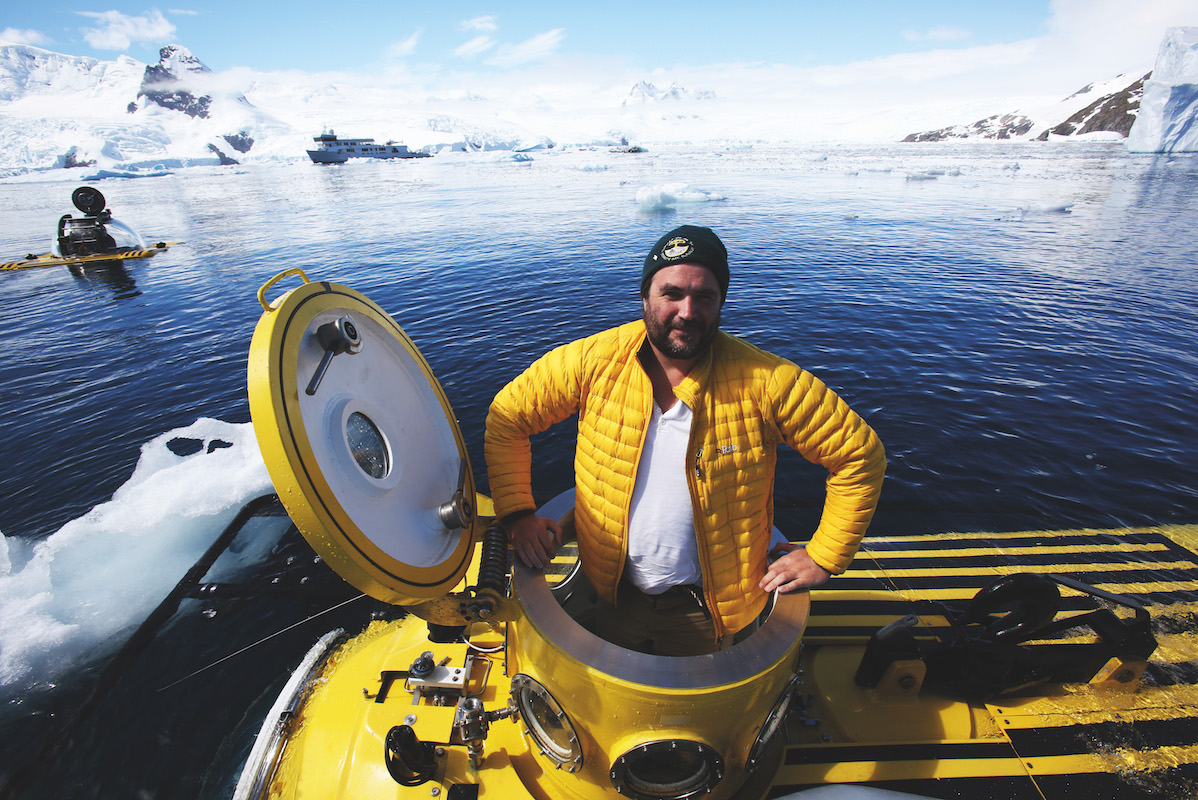
How sustainable is it?
Airlander will be at the forefront of an exciting new era of low-carbon air travel. By leveraging the buoyancy of helium, Airlander’s cutting-edge technology requires significantly less fuel to operate than comparable conventional aircraft. In a hybrid-electric configuration (with two electric motors and two combustion engines) Airlander 10 will deliver a 90% reduction in emissions. An all-electric version will be available by 2030 with zero emissions. The aircraft will also be much quieter than conventional aircraft and can further reduce noise pollution by switching off two out of the four engines during the cruise part of the flight.
How much does it draw on traditional airship design? Could it be described as “retro-futurist”?
Yes, Airlander is a hybrid aircraft, meaning it combines a number of proven technologies. It utilises a gas-filled hull to generate buoyancy like the airships of the past, but uses helium instead of hydrogen. Unlike airships, Airlander operates ‘heavier-than-air’ which makes ground handling much simpler and safer. The aircraft will come down and land like a conventional aeroplane.
In terms of the interior, Airlander will draw on some elements of traditional airship design. The airships of the past were known as being incredibly elegant and were described as ‘hotels in the sky’. Airlander’s design has been carefully thought-out to be able to deliver a high-end guest experience, similar to having chartered a superyacht. Its design is sleek and contemporary. There will be a focus on clean lines. The stylish bar and luxurious dining set ups will make the most of the spectacular views. There will also be private viewing platforms, so guests can clearly observe natural landmarks and local wildlife.
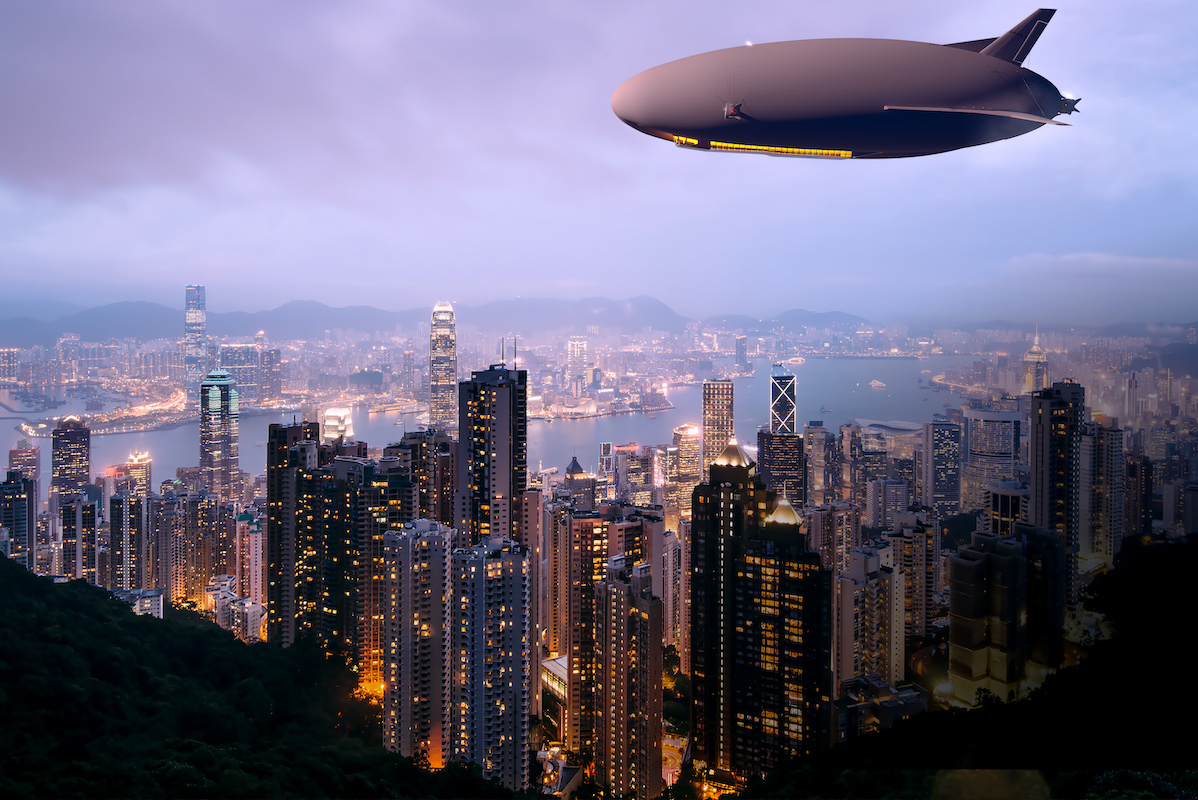
What sort of range does the aircraft have?
In a luxury tourism configuration Airlander 10 will have a range of 2,000 nautical miles. The aircraft will be Type Certified and capable of flying in a wide range of weather conditions and can take off and land from virtually any flat surface.
What would your ideal destination be with the Airlander?
Airlander will offer a new way to explore the interior of continents I’ve visited many times before, such as Antarctica and Africa. The journey will be part of the enjoyment and you will gain a completely different aerial perspective on wildlife and landscapes. I think Oman would be an extraordinary destination to explore differently with Airlander. Being able to soar above the white sandy beaches and the undulating dunes of the Arabian Peninsula would be spectacular. Airlander will be able to accommodate a range of expedition assets on board, so the journey from coast to desert can be seamlessly interspersed with exclusive experiences, ranging from diving in marine-rich waters to high-adrenaline dune buggy rides, before guests finally arrive in a remote desert location at an elegant luxury tented camp.
